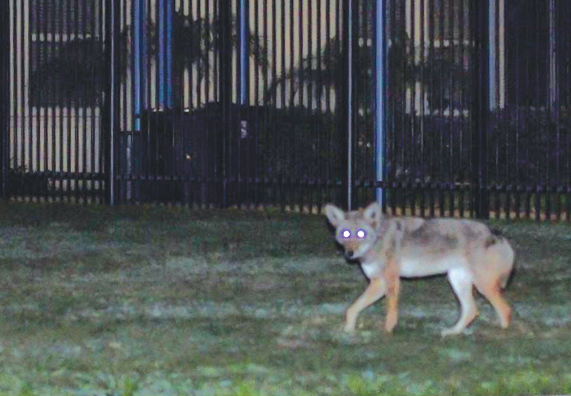The first time former American Studies student Robin Nixon saw a coyote on upper campus was five years ago, during her second semester of college at Long Beach State.
“It was that whole open area where the Beach Hut and the [University] Library is,” Nixon said. “It was around 6 or 7 [p.m.] and I thought it was a large dog … I’ve heard people talk about about it during SOAR orientations and I was like, ‘I’ll never see it’ but then I saw it. It’s very eye opening that wildlife is all around us.”
Nixon is one of many students who have witnessed the animals on campus, one that elicits controversy in its native Southern California region.
In December, Long Beach and other Southern California residents pressured the California Fish and Game commission to reconsider coyote extermination practices, which it uses as a last resort. In 2008, feral cats on campus that attracted coyotes brought a huge wave of controversy, as many students did not want to have coyotes in the area.
Neighbors in the area gathered on NextDoor, a neighborhood forum, to discuss the latest sightings and the threat of coyotes to their animals. Long Beach Councilwoman Stacy Mungo replied to a NextDoor user: “These animals can pose a threat to people, property and pets.”
But there’s a benefit to having these creatures around, too.
According to Ted Stankowich, an associate professor of biological sciences who runs the Stankowich lab, the fear of coyotes may stem from the fact that humans are not acculturated to living with them anymore.
“We as a society have lost our connection to the land and nature around us,” Stankowich said.
Stankowich said that at one point, the coyotes probably inhabited the tall grass near East Campus Drive that was recently removed by the Heating and Hot Water Infrastructure Project.
Coyotes’ diet consists of other wildlife that traverse the school, including rabbits, racoons and skunks. The coyote plays an important role in keeping these “pest populations” low.
The wild canines are also presumed to drink out of the campus fountains or anywhere they can find water. If someone sees a coyote, Stankowich suggests keeping distance.
“If one does begin to show interest and walk towards you, the best … form of action is to yell at it, throw things at it, make yourself aggressive, harass the animal,” Stankowich said.
Coyotes frequent Puvungna, the Tongva sacred site near the Parkside College dorms.
“There’s so many coyote stories, and when you’re around more traditional people in California, they sit there and they tell these stories, and people just laugh and laugh,” said American Indian studies professor Cindi Alvitre, who wrote “Coyote Tours,” an article that speaks on the importance of coyote space in the Los Angeles area.
In Tongva culture, the coyote is a deity that represents neither good or bad and can serve as a reflection of human behavior. According to Alvitre, in “the old way,” before settlers, humans and coyotes had a more respectful relationship. Now, the relationship is more strained.
“I think they don’t know Coyote,” Alvitre said. “He’s just a stranger down the street that shows up every once in a while. They’re just not quite sure who he is.”
According to Capt. Richard Goodwin of the University Police Department, there haven’t been many recent coyote reports.
“I’ve got to be honest with you, it’s been a long time since someone has called me about a coyote,” Goodwin said.
Ever since the 2008 coyote controversy, it seems to him that while “[there is a] stigma that the coyote is going to eat you,” many people may either not be aware or do not care about the population on campus.
According to Nixon, people should leave them alone, because coyotes had a presence in the area far before settlers did. To Alvitre and other Southern California Native people, the coyote is as prevalent to Puvungna as the people.
Alvitre said she sees coyotes near Puvungna all the time, and hopes that Coyote does not forget where he came from.
“[Coyote] probably feels more welcome [at Puvungna],” Alvitre said. “Maybe Coyote is looking for his broken heart because he knows that the people are there.”




